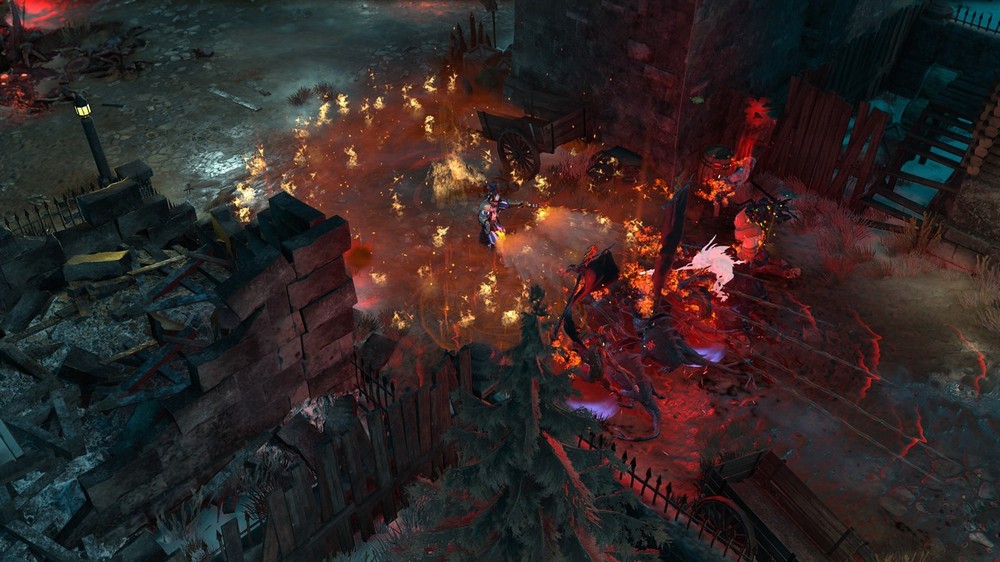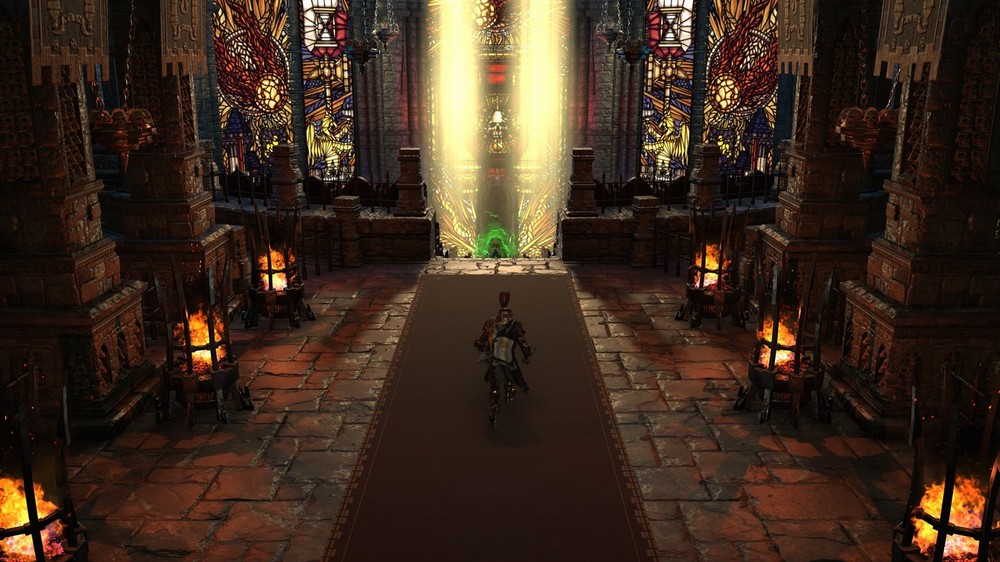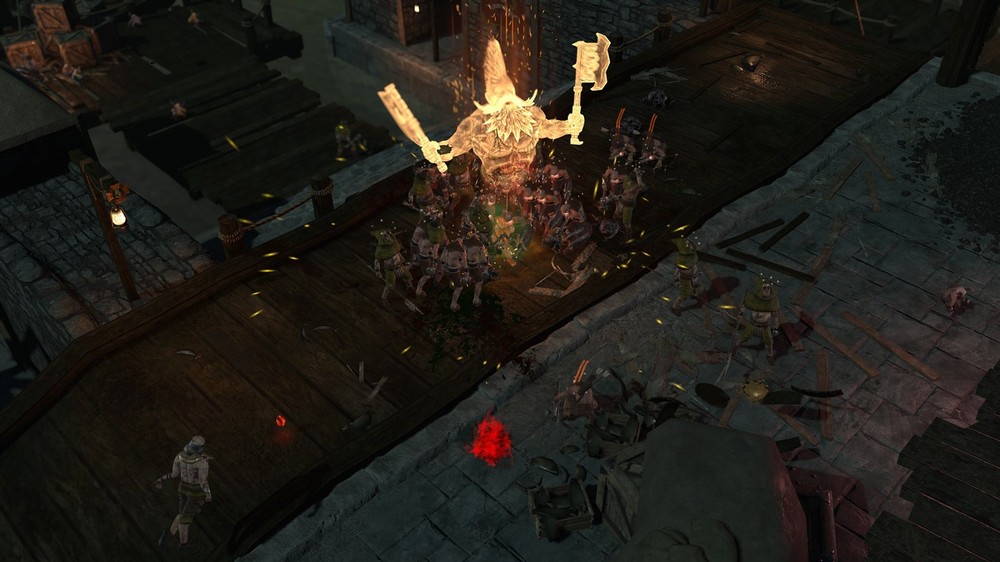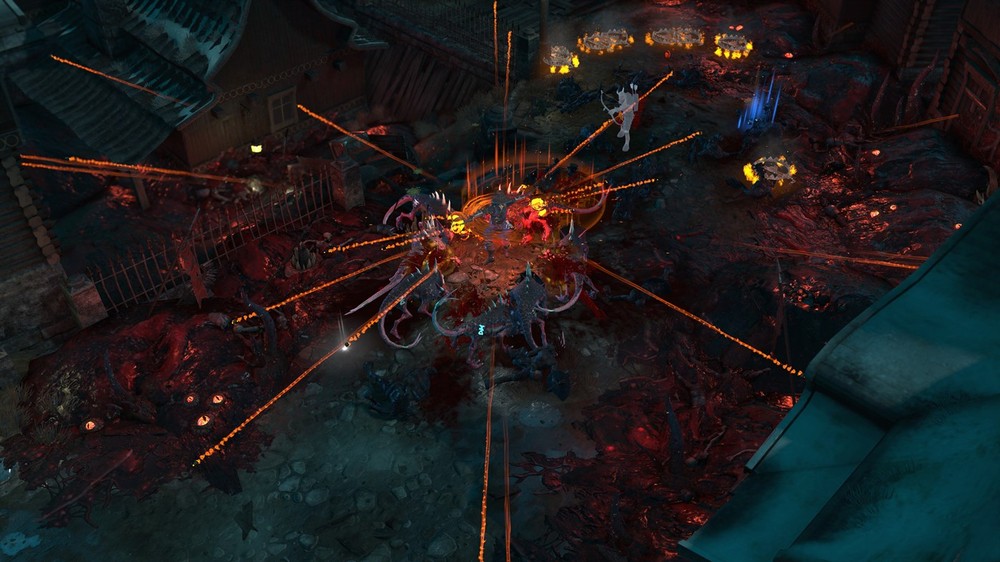Warhammer is a property that I have always kept locked behind a particular door in my brain for fear of financial devastation related to the purchasing and painting of miniature figurines. However, the aesthetics have regularly appealed, and so any opportunity to jump into that world that doesn’t threaten my ability to pay rent is welcome. Warhammer: Chaosbane is the most recent attempt to represent the Warhammer universe in videogame form, having originally released in May 2019 on PC, Xbox One and PS4, with the new Slayer Edition featuring all DLC and releasing on the two Xbox Series consoles and PlayStation 5 this month. Sitting firmly in the hack-and-slash genre, Chaosbane tasks you with defeating the hordes of Chaos while playing as a variety of different characters.
One of the benefits of placing a game in an already existing universe such as Warhammer is the fact that there isn’t much of a requirement to set up the world and have a relatively slow opening full of exposition. Chaosbane gets right into the thick of the action: following a previous war, your job is to mop up remnants of the Chaos hordes and prevent them from rising up and threating the world once again. There’s still a slower pace to the earlier missions than to the encounters that you’ll have later in the game, but this is more because of typical videogame mechanics required to show players the ropes and to get a handle on their chosen character.
 There are six different characters to choose from in Chaosbane, each with their own particular personality, class and set of skills. New to the Slayer Edition is the Witch Hunter class, but you are also able to choose from a Soldier, Mage, Slayer, Scout and Engineer if you wanted to stick with one of the original offerings. While the story remains the same for each character, voice-acting and certain dialogues will reflect who you are playing as, and the fact that each character plays differently means that similar areas and passages of gameplay will end up feeling quite different depending on your approach. Chaosbane is also able to be played in up to 4-player co-op as well, meaning that you can mix and match your party’s approach to create a smoothly operating war machine should you have the inclination.
There are six different characters to choose from in Chaosbane, each with their own particular personality, class and set of skills. New to the Slayer Edition is the Witch Hunter class, but you are also able to choose from a Soldier, Mage, Slayer, Scout and Engineer if you wanted to stick with one of the original offerings. While the story remains the same for each character, voice-acting and certain dialogues will reflect who you are playing as, and the fact that each character plays differently means that similar areas and passages of gameplay will end up feeling quite different depending on your approach. Chaosbane is also able to be played in up to 4-player co-op as well, meaning that you can mix and match your party’s approach to create a smoothly operating war machine should you have the inclination.
There are an impressive number of ways in which to customize your character in Chaosbane which means that by the end stages of the game, your character can feel quite distinct even from a different build in the same class. While the obvious focus of picking up, sorting through and equipping various pieces of weaponry will be familiar to anyone who has played a game in the genre before, Chaosbane features a number of subsystems that allow you to get involved in the nuts and bolts of how your character operates. This ranges from a variety of skills (both active and passive) that can be equipped and upgraded to the ability to Bless certain pieces of equipment in order to skew their stats towards a particular area of effectiveness. On top of this, you can choose to donate your unwanted items instead of selling them, which will stop you from getting a monetary return but promises rewards of a different kind further down the road.
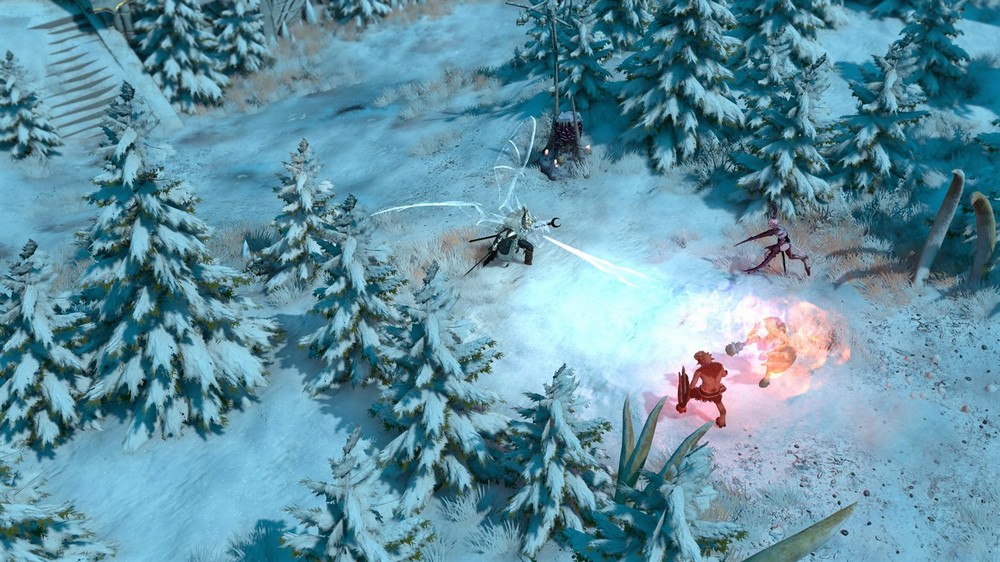 Chaosbane seems intent on allowing the player to experience the game however they wish, and while there are certain elements of this approach that are worthy of praise, it does result in the overall experience feeling a little disjointed at times. There are a mind-boggling fifteen different difficulty levels within the game, each offering different levels of experience return and an increased potential for greater rewards, and this can be changed between each of the missions, which often last about twenty minutes depending on how well you do. This means that you’re able to regularly switch up the experience if you wish, lowering the difficulty if you’re struggling or pushing it up a notch or two if you’re willing to risk your wellbeing for a chance at better equipment.
Chaosbane seems intent on allowing the player to experience the game however they wish, and while there are certain elements of this approach that are worthy of praise, it does result in the overall experience feeling a little disjointed at times. There are a mind-boggling fifteen different difficulty levels within the game, each offering different levels of experience return and an increased potential for greater rewards, and this can be changed between each of the missions, which often last about twenty minutes depending on how well you do. This means that you’re able to regularly switch up the experience if you wish, lowering the difficulty if you’re struggling or pushing it up a notch or two if you’re willing to risk your wellbeing for a chance at better equipment.
The flipside of this is that Chaosbane never really seems to get into its stride, partly because of the story being broken up into bitesize chunks and partly because of the way the game is setup to reflect this. There are four chapters within the main game, with two extra DLC chapters included as part of the Slayer Edition package, and while there is a main narrative that flows through the chapters, I never found myself to be especially invested in it. I think that the main reason for this was because no matter what was happening in the story as a whole, I was regularly being asked to revisit places that I had already been and take part in activities that I had already done. While each chapter takes place in a distinct region, the vast majority of missions in each region will see you visiting the same places time and again. Chapters One and Two, for example, see you visiting sewers and city streets respectively, and with up to ten missions in each chapter, it feels like you’re going over the same ground over and over. This sensation isn’t helped by the fact that it quickly becomes evident that Chaosbane only possesses a limited number of environment tiles, so while aesthetically each mission feels familiar, you’ll also soon start to notice the same small details repeated ad nauseum.
 In terms of playing Chaosbane on the next generation of consoles, it feels like a case of more of the same, but better. There isn’t much here that will blow your mind and make you relieved that you chose to play on the Xbox Series X/S or PlayStation 5, but there are still a couple of notes that are worth mentioning. Firstly, the detailing in environments is impressive, and I barely noticed any slowdown, even with numerous enemies on screen and multiple effects happening both in the foreground and background. Perhaps the biggest improvement though, and I am aware that this is more a system feature, is the fact that I could Quick Resume my game, jumping in for a couple of missions before moving on to something else, safe in the knowledge that I could return to exactly where I was previously. For a game such as Chaosbane, where short bursts of gameplay serve the setup most effectively, this is definitely a welcome change that adds a lot to the experience.
In terms of playing Chaosbane on the next generation of consoles, it feels like a case of more of the same, but better. There isn’t much here that will blow your mind and make you relieved that you chose to play on the Xbox Series X/S or PlayStation 5, but there are still a couple of notes that are worth mentioning. Firstly, the detailing in environments is impressive, and I barely noticed any slowdown, even with numerous enemies on screen and multiple effects happening both in the foreground and background. Perhaps the biggest improvement though, and I am aware that this is more a system feature, is the fact that I could Quick Resume my game, jumping in for a couple of missions before moving on to something else, safe in the knowledge that I could return to exactly where I was previously. For a game such as Chaosbane, where short bursts of gameplay serve the setup most effectively, this is definitely a welcome change that adds a lot to the experience.
Warhammer: Chaosbane – Slayer Edition is one of those games that proves exceptionally difficult to evaluate, as while it doesn’t have any major issues, it also doesn’t really do enough to cause it to stand above games of a similar type. In terms of positives, there is a lot on offer in terms of content and the ability to customize both the experience and your character to your liking, but the other side of the coin reveals that you’ll likely be hard-pressed to find a compelling reason to do so, unless you have a group of friends desperate to play the game. Both story and mission structure are dull and repetitive and there isn’t enough variety in either weapons and equipment or the enemy ranks to create excitement from seeing something new. I don’t want to be too harsh on the game as didn’t dislike my time with Chaosbane, but I also never noticed anything that made me sit up and pay more attention than a regular slouch exhibit. Chaosbane feels like the kind of game that exists just because it does, and while I wouldn’t explicitly advise you to stay away, I also similarly wouldn’t encourage you to rush out and purchase the game. This is a middle of the road experience, and while some players might find enjoyment in the experience, I had a constant feeling that it could have been doing just that little bit more.


